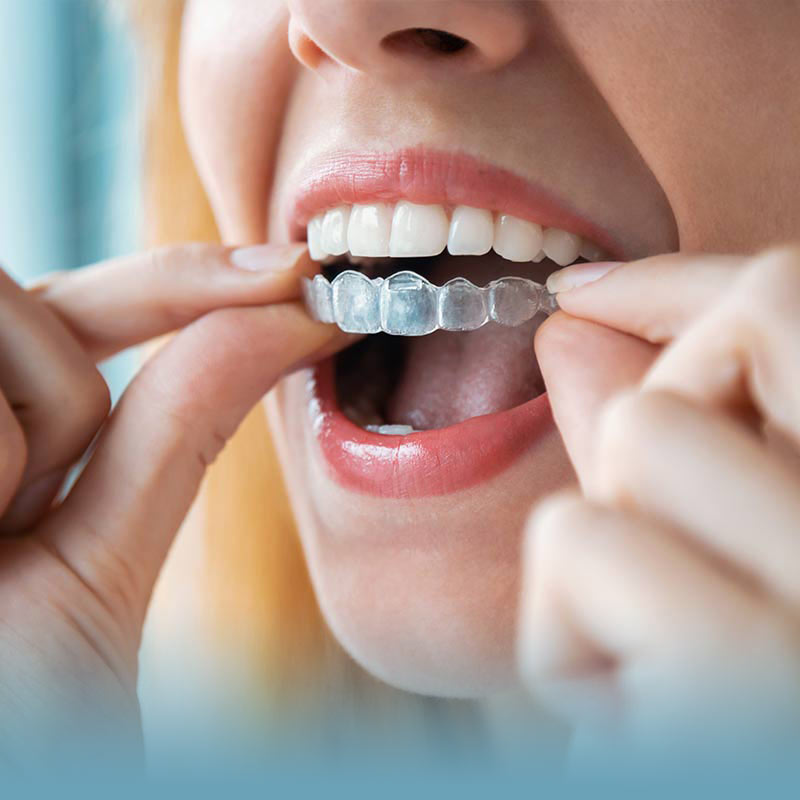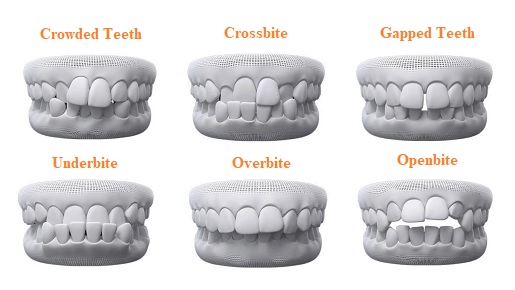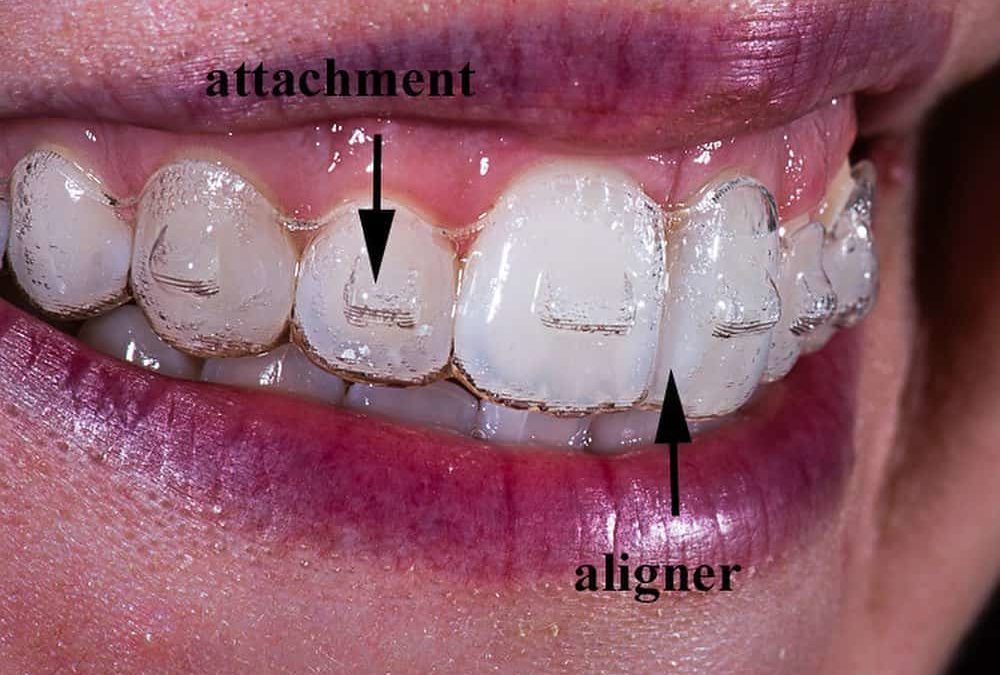Discover the Advantages of Invisalign for a Perfect Smile Improvement
Discover the Advantages of Invisalign for a Perfect Smile Improvement
Blog Article
Invisalign vs. Standard Dental braces: Which Alternative Is Right for You?
When thinking about orthodontic therapy, the selection between Invisalign and conventional dental braces offers numerous important elements that warrant mindful evaluation. Invisalign provides a discreet option with detachable aligners, while typical braces offer a much more noticeable yet reliable solution for severe misalignment. Each option incorporates distinctive advantages and drawbacks connected to appearances, comfort, therapy duration, and expense. Recognizing these subtleties is crucial for making an educated choice that straightens with your personal choices and lifestyle. The inquiry stays: which choice will ideal meet your orthodontic needs and assumptions?
Summary of Treatment Choices

In contrast, conventional dental braces include metal brackets and cords that are bonded to the teeth. This approach applies continuous pressure over time to achieve alignment. While effective for complicated orthodontic concerns, standard dental braces need regular brows through for modifications and can present obstacles in maintaining oral health because of the difficulty of cleaning up around brackets and cords.
Both alternatives have their merits, and the option often depends upon certain oral problems, way of living preferences, and client compliance. Eventually, speaking with an orthodontic professional is critical for determining the most appropriate treatment plan tailored to individual demands. Recognizing the nuances of each option can significantly influence the overall success of orthodontic therapy.
Aesthetic Considerations
A significant factor affecting the option between Invisalign and traditional dental braces is the aesthetic appeal each treatment supplies. Invisalign aligners are crafted from clear plastic, making them basically invisible when used.
On the other hand, standard dental braces consist of steel brackets and cables, which can be more recognizable. While advancements in orthodontic modern technology have led to the growth of smaller braces and colored elastics, typical braces still keep an even more noticeable account. For some individuals, the presence of braces might deter them from looking for necessary therapy.
Ultimately, the choice in between Invisalign and conventional dental braces may depend upon personal preferences regarding visual appeals. People who focus on discernment typically favor Invisalign, while those who are less worried concerning visibility may go with traditional dental braces. Recognizing the aesthetic implications of each option is critical for making an informed choice that straightens with one's lifestyle and preferences.
Comfort and Convenience

In regards to convenience, Invisalign aligners are removable, enabling clients to enjoy their preferred foods without limitation and keep optimal dental hygiene. Brushing and flossing are simplified, as the aligners can be taken out throughout these routines, whereas traditional dental braces visit need cautious maneuvering around wires and braces.
Furthermore, Invisalign's progressive system permits for less orthodontic check outs. Clients generally get several collections of aligners at when, which can improve the therapy process and reduce time invested in the orthodontist's chair. In contrast, typical braces demand routine adjustments, making them much less convenient for those with hectic schedules. Invisalign. On the whole, the comfort and ease of Invisalign make it an attractive selection for lots of people seeking orthodontic therapy.
Therapy Duration and Efficiency
While both Invisalign and traditional braces are effective in remedying dental misalignments, the duration of therapy can differ considerably in between the 2 options. Normally, Invisalign therapy can take anywhere from 12 to 18 months, depending on the complexity of the situation. The clear aligners function by progressively shifting teeth into their preferred settings, and normal follow-ups with an orthodontist aid ensure progress stays on the right track.
In comparison, typical braces frequently need a longer dedication, normally varying from 18 months to 3 years. This results from their set nature and the usage of braces and cords, which can be extra effective for complex cases and severe misalignments (Invisalign). The treatment efficiency of conventional braces is well-documented, as they permit exact modifications and better control over tooth activity
Inevitably, the option in between Invisalign and standard dental braces may rest on both the anticipated treatment period and the certain oral problems at hand. Consulting with an orthodontist is essential, as they can offer tailored recommendations based upon specific requirements, ensuring the picked approach lines up with desired durations and read review results.
Expense Comparison and Insurance Coverage Options
Cost plays a significant duty in the decision-making procedure for people thinking about orthodontic treatment, whether selecting Invisalign or typical dental braces. Usually, the cost of Invisalign ranges from $3,000 to $8,000, while typical dental braces usually cost in between $2,000 and $6,000. Variables affecting these expenses include the intricacy of the situation, the duration of treatment, and geographical area.
Insurance policy protection can substantially affect out-of-pocket expenses. Numerous dental insurance strategies give partial protection for orthodontic treatments, but the specifics can differ extensively. It is crucial for clients to evaluate their insurance coverage to determine the extent of protection for either option. Normally, conventional dental braces may be a lot more frequently covered by insurance coverage plans compared to Invisalign, which some insurers classify as a cosmetic treatment.
Additionally, a number of orthodontic visit our website methods supply flexible repayment strategies, making both therapy options a lot more obtainable. Patients ought to ask concerning potential financing alternatives and discounts for in advance repayments. Reviewing the total cost, consisting of insurance policy advantages and layaway plan, is essential for making an informed choice that straightens with both aesthetic preferences and spending plan factors to consider.

Final Thought
In summary, the option between Invisalign and conventional braces depends upon multiple factors, including aesthetic choices, convenience, therapy duration, and cost. Invisalign provides a discreet, removable option that facilitates oral health and nutritional versatility, while conventional braces may be more ideal for intricate oral issues and frequently come at a reduced cost point. Ultimately, consultation with an orthodontist is crucial to analyze specific scenarios and identify the most ideal treatment option for attaining ideal dental alignment.
When taking into consideration orthodontic treatment, the choice in between Invisalign and standard braces offers a number of important variables that merit careful examination.Comparing Invisalign and typical braces discloses unique treatment choices for orthodontic adjustment.While both Invisalign and typical braces are reliable in fixing oral misalignments, the period of treatment can differ considerably in between the two choices.Price plays a considerable duty in the decision-making process for people considering orthodontic therapy, whether deciding for Invisalign or standard dental braces.In summary, the selection between Invisalign and conventional dental braces hinges on several factors, including visual preferences, convenience, therapy duration, and expense.
Report this page